A well-honed production line can produce thousands of parts per hour, each of which should meet the same standards of quality and consistency. One way to check this is to use robotic quality inspection. Toni Roda of ABB Robotics explains how the latest advances in inline robotic 3D quality inspection technology can be used to ensure checking of 100% of parts in Tier 1 and automotive production lines
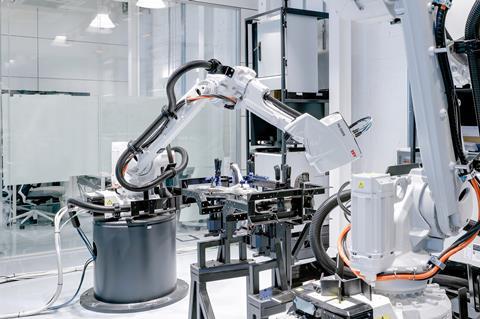
As the automotive industry has reacted to the demands from customers for greater quality and reliability, it has produced many innovations in production. With vehicles increasingly becoming complex amalgams of electronic and mechanical systems that integrate new power sources and sensors, maintaining quality has never been more important.
Quality inspection in Tier 1 manufacturing and the automotive production plant itself has most often relied on manual statistical inspection. This involves taking sample products offline and inspecting them, using the measured characteristics of these samples to infer the quality of a batch of components as a whole.
“Assessing the quality of a complete batch from just a few samples can also present the risk of complete batches being unnecessarily rejected based on a single faulty component” – Toni Roda
This method presents several problems. Chief among these is the growing shortage of skilled people with the expertise to perform the required quality inspection process. The responsibilities of the role require them to be trained metrologists, which are becoming harder to find.
Another factor is that, with the precision available in CAD design and CNC production, the level of inspection required is getting higher – in many cases, this exceeds the ability of the unaided human eye.
There is also the potential for human error or misinterpretation. Human-based inspection lacks stability and reliability. For the same part and defect, a particular inspector can make different assessments at different times of the day or night, depending on factors such as health and degree of tiredness, while different inspectors can potentially have different standards and things they look for. All these factors open up the potential for inconsistencies in inspection and quality.
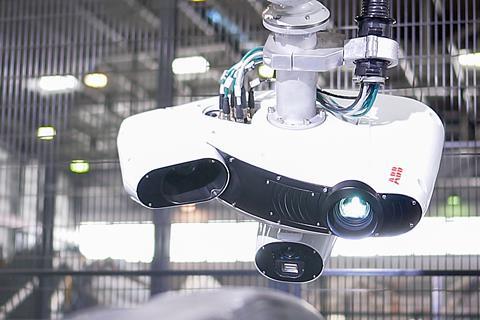
Assessing the quality of a complete batch from just a few samples can also present the risk of complete batches being unnecessarily rejected based on a single faulty component.
Quality testing, even with the aid of co-ordinate measuring machines, can take several hours to complete an analysis of a single part. As well as affecting productivity, this can also limit the number of parts that can be checked per batch.
Towards automated inspection
As automated production technologies revolutionise manufacturing, there is a corresponding need for automated inspection techniques that can match them. This need has seen the rise of 3D quality inspection, which allows a manufacturer to perform accurate 3D scanning, inspection and analysis of a component without affecting the speed of production. As well as checking parts manufactured on site, it can be used to maintain the quality of parts arriving from suppliers, and to detect other criteria such as misalignment between assembled components.
The most capable and flexible automated inspection systems use robots. Some systems have fixed cameras at fixed points but cannot provide complete visualisation. By contrast, a robot can move all around an object and the more axes it has, the more flexibility it has to scan objects with irregular or complex shapes.
ABB uses its own 3D optical scanners with structured light technology for quality inspection based on geometrical measurements. Using optical scanning to scan millions of points in minutes, allows detailed measurements to be carried out, cutting the time associated with manual techniques and reducing the potential for errors.
Offline or Inline?
The two main options for robotic inspection are offline and inline. Offline inspection involves taking one part out of every batch and inspecting it very accurately. As a method that captures large amounts of data, this is a statistical inspection method that is best employed when there are no restrictions on measuring time.
By contrast, inline methods are used as an integral part of the production line. They capture less data but do so much more quickly, focusing on specific areas and/or feature of a part, allowing them to match the production rate of the line. Inline methods check every manufactured part, ensuring each reaches the required quality standards.
One of the main benefits with inline inspection is that products that are out of tolerance or not formed correctly are detected early in the manufacturing process. Because they are caught early, they do not undergo further processing or handling, avoiding working on faulty components, saving time and energy, and cutting wastage. An additional benefit is that information on deviations from the target values can be fed back to inform improvements to the upstream process.
ABB’s robotic 3D Quality Inspection (3DQI) solution is a suite of hardware and software that provides automatic part inspection. As such, the solution far exceeds the capabilities of manual inspection in the key areas of speed, accuracy and repeatability. Both offline and inline solutions are available.
The 3DQI offline quality and metrology cell is ABB’s standard cell for offline quality inspections. Easy to install, use and relocate, it provides high accuracy while taking up a minimum amount of floor space. In the offline version, the solution will take one part from each batch and inspect it very accurately, comparing this data to a CAD model of the component.
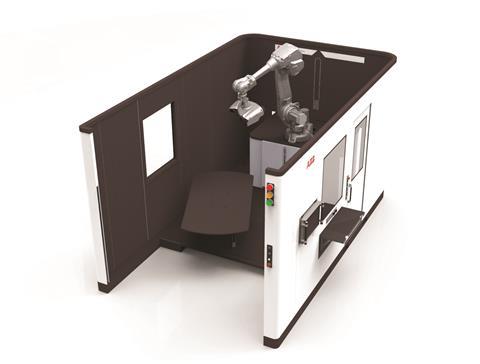
Correct the fault where it happens
By contrast, the 3DQI In-line quality inspection and control solution gives high-level quality inspection of every part during the manufacturing process, enabling any faults to be quickly detected and corrective actions taken.
The inline solution is intended to be used between two process steps, offering the speed to keep up with production cycle times.
With production processes, welds may not turn out exactly the same, making it difficult to compare them to a model. Instead, for inline inspections, a database of welding seam images is created and stored. Every time a new picture is taken of a production weld, it is compared to the image bank, allowing users to see whether the welding seam is correct or not.
With skilled operators becoming difficult to find, this technique moves know-how to a machine learning system and away from the need to have human experts. The same approach can be used for every type of parameter that needs to be checked, which could be welding position, quality, rivet position or any number of other characteristics.
The system can be trained using previous cases, with users providing the specification, and choosing the characteristics they regard as the most important to inspect. The specification can be numeric or qualitative, as quality is not always measurable simply with numbers.
ABB has developed a range of software plug-ins to add extra functionality to ABB´s sensor, meeting customer needs such as geometrical quality, reverse engineering, RPS correction laser cutting and welding seam quality. Additional plug-ins are also planned for rivet detection, spatter detection, crater detection and wrinkle analysis. These plug-ins can simply be added to the software for the existing system.
ABB’s RobotStudio is used for programming and integration. This suite allows robots to be set up from a PC, ensuring tasks such as training, programming, simulation and optimisation can be performed without disturbing production.
Putting inspection to the test
As a major user of both welding and automation, the automotive industry is a natural fit for 3D inspection. One important use case for the industry is battery inspection for electric vehicles. There is a need for a thorough inspection of the rivets, welds and components that hold together electric vehicle battery trays to ensure they can withstand the thermal expansion of the battery. They also need to resist any shocks or vibrations while the vehicle in is in motion.
Another key area that can benefit from 3D inspection is the front side rail. As a major part of a vehicle’s body, it helps absorb the force of an impact or collision. It is therefore vital to ensure the component parts are correctly manufactured and assembled if the front rail is to fulfil its function properly.
The benefits of robotic 3D inspection are wide ranging and bring the speed, accuracy and tireless analysis that companies need to produce high quality products.
Find more here































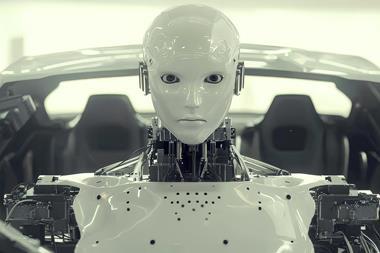
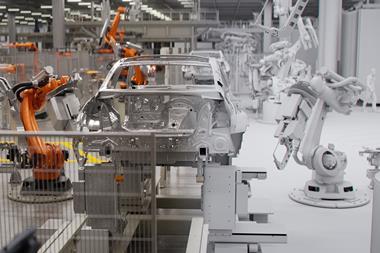



No comments yet